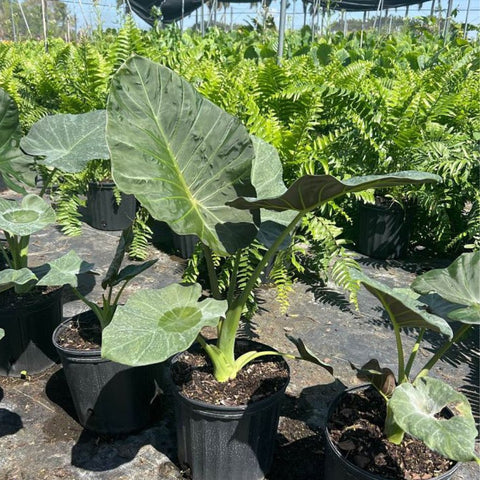Introduction
Hook: Did you know that over 85% of springtime plant diseases can be mitigated with early detection and prevention? As the frosty grip of winter recedes, and the landscape blooms into vibrant life, spring is also primetime for the dissemination of plant diseases. Understanding how these insidious diseases operate is crucial for the protection of your lush, green oasis.
Purpose: For garden enthusiasts and plant aficionados, spring represents a season of hope and renewal. However, with this promise of rejuvenation comes challenges, particularly in the form of plant diseases. Early intervention is essential, as it ensures the continued health and vitality of your plants and trees, allowing you to savor the beauty of spring without the worry of disease-related setbacks.

Overview: In this comprehensive guide, we'll delve into the fundamental understanding of plant diseases, discuss various common springtime plant diseases, explore strategies for diagnosis and prevention, and highlight the role of quality plant products, like those available at Plantology, in maintaining a disease-free garden.
Understanding Plant Diseases
Definition
Plant diseases are disruptions caused by infectious agents, leading to visible damage or physiological dysfunction. These diseases can manifest as leaf spots, wilting, dieback, stunted growth, or overall plant decline, affecting the aesthetic and functional value of your garden.
Causes and Spread
Pathogens
Pathogens are the primary agents of plant disease and include fungi, bacteria, viruses, nematodes, and phytoplasmas. Each of these microorganisms attacks plants differently, often exploiting climatic conditions prevalent in spring, such as increased moisture and warming temperatures, to facilitate their spread.
Transmission Vectors
Diseases can spread via various vectors including water, wind, insects, and poor garden hygiene. For instance, splashing rainwater can carry spores from infected plants to healthy ones, while insects can act as carriers, transferring pathogens as they move from one plant to another.

Environmental Factors
Environmental conditions profoundly influence the incidence of plant diseases. Factors such as humidity, temperature fluctuations, and poor air circulation can create ideal breeding grounds for pathogens. As spring heralds rain and warmer temperatures, these conditions become ripe for disease proliferation.
Common Springtime Plant Diseases
Fungal Diseases
Powdery Mildew
Characterized by white, powdery fungal growth on leaves, stems, and flowers, powdery mildew thrives in moderate temperatures and high humidity. It obstructs photosynthesis and can inhibit plant growth.
Rust
Rust appears as orange, yellow, or brown pustules on leaf undersides, diminishing the plant's vigor over time. Highly contagious, it requires prompt action to prevent widespread infestation.
Leaf Spot
Leaf spot shows as dark, circular lesions on foliage, eventually leading to premature leaf drop. Caused by numerous fungal species, it is one of the most common visible diseases in spring.
Bacterial Diseases
Bacterial Blight
This disease manifests as water-soaked spots that evolve into dark, necrotic areas. Bacterial blight can affect leaves, flowers, and stems, leading to significant plant stress.

Fire Blight
Particularly destructive to fruit trees, fire blight causes a scorched appearance, with branches and twigs resembling charred remains. It spreads rapidly during wet spring weather.
Viral Diseases
Tobacco Mosaic Virus (TMV)
TMV causes mottled coloring and blistered leaves, severely stunting plant growth. It is persistent in various environments, often surviving in soil and plant debris over winter.
Diagnosing Plant Diseases
Visual Identification
Evaluating visible symptoms such as leaf discoloration, spots, or wilting is the initial step in diagnosing plant diseases. However, symptoms can often look similar across different diseases, necessitating a cautious approach.
Plant Pathogen Testing
Accessing laboratory tests and diagnostic kits can provide precise information about the pathogens infecting your plants. These tests help distinguish between fungal, bacterial, or viral issues.
Consulting Experts
Leverage the knowledge of local horticulturists or extension agents who can provide tailored advice and suggest control measures suitable for your region's specific conditions.

Preventing Springtime Plant Diseases
Cultural Practices
Proper Plant Spacing
Ensure adequate spacing between plants to promote air circulation and reduce humidity levels, limiting the conditions favorable to fungi and bacterial growth.
Soil Health Management
Regularly amend soil with organic matter, ensuring appropriate pH levels, and enhance drainage to build resistance against diseases. Consider using our Plantology range of soil conditioners for an optimal growing substrate.
Choosing Disease-Resistant Varieties
Select plants and trees that boast disease-resistant properties. Visit our Plantology store to explore a range of robust options, such as the Adonidia Palm, known for its enduring health.
Hygiene and Quarantine
Disinfect garden tools regularly and practice quarantine for new plant acquisitions to avoid introducing potential pathogens into your garden. This simple practice can considerably reduce the risk of disease outbreaks.
Treatment and Management
Chemical Treatments
Fungicides and Bactericides
Employ targeted fungicides or bactericides to control existing diseases, ensuring you adhere strictly to application instructions to avoid plant stress or environmental harm.

Biological Control
Utilize beneficial microbes and predatory insects that naturally suppress pathogen populations. Incorporating certain companion plants can enhance these biological defenses.
Regular Monitoring
Conduct periodic inspections, especially after rain, to catch early signs of disease establishment. Proactive management is key to subsample and sustainable control.
Case Studies and Success Stories
Reviving a Diseased Orchard
An orchard severely affected by fire blight was revitalized by implementing a comprehensive integrated pest management (IPM) plan encompassing cultural practices, biological controls, and selective treatments.
Gardener's Testimonial
One of our community members turned her wilting vegetable patch into a thriving sanctuary by opting for disease-resistant plant varieties and adhering to proper spacing and soil management protocols.
Plantology's selection provided her with adaptable options, such as the robust Agapanthus Lily of the Nile known for its resilience and beauty.
Conclusion: Cultivate a Healthier Spring Garden
Recognizing and addressing springtime plant diseases is fundamental to maintaining garden health and aesthetics. This season, equip yourself with knowledge, vigilance, and the high-quality products available at Plantology, to revitalize your garden and nurture a verdant paradise.

Explore our range of premium plants like the stunning Agave Desmettiana Variegata, and embark on a journey toward a flourishing and disease-free garden this spring.
For more insights and products, visit Plantology's website, your trusted partner in plant wellness and garden innovation.
Deep Dive into Plant Disease Types
To tackle plant diseases effectively, it's imperative to gain a deeper understanding of the varied types that commonly afflict plants during spring. Over the next few sections, we will explore these categories in more detail, providing exhaustive insights into their causes, management, and prevention strategies.
Fungal Diseases: The Undercover Invaders
Fungal Wilt: A significant number of plant diseases stem from fungi, with fungal wilt being a particularly insidious example. These pathogens, such as Verticillium or Fusarium, infect vascular tissues, causing plants to wilt and eventually die. With symptoms often first appearing as leaf yellowing or browning, early identification is crucial for containment.
Downy Mildew: Often confused with its powdery counterpart, downy mildew primarily affects the undersides of leaves, leading to discolored and deformed foliage. Favoring cool, damp conditions, it's a common adversary during unpredictable spring weather.
Management Strategies for Fungal Diseases
Integrating certain cultural practices can effectively manage these pernicious diseases:
-
Crop rotation: Alternating plant species or varieties each season can disrupt the lifecycle of soil-borne fungi that persist in the absence of their preferred host.

- Improved drainage: Adjusting soil composition to enhance water drainage mitigates the damp conditions favorable to fungal growth.
- Clean up debris: Regularly remove fallen leaves and plant debris that harbor fungal spores. Composting infected plant material may exacerbate the problem if not managed correctly.
Bacterial Diseases: The Rapid Spreaders
Bacteria can spread swiftly, often surviving in plant debris or soil. Understanding common bacterial diseases aids in their early detection and management.
Bacterial Canker: This disease typically manifests as sunken or swollen areas on stems or branches, often accompanied by dieback and leaf spots. It is especially harmful to stone fruit trees, requiring vigilant pruning and removal of infected limbs.
Prevention and Control Techniques
Preventive measures can significantly curtail bacterial disease outbreaks:
- Sanitization: Regularly disinfect gardening tools, especially after use on infected plants, to curb the spread of bacteria.
- Copper-based Treatments: Application of copper-based bactericides can prevent bacterial entry and replication. Ensure these are used judiciously to avoid phytotoxic effects.
Viral Diseases: The Stealthy Threats
Viral infections can be challenging as they often mimic symptoms of other diseases or environmental stressors. They are spread primarily through insect vectors and mechanical injuries.

Cauliflower Mosaic Virus (CaMV): This virus causes mottling and stunting of plant growth where symptoms are similar to nutrient deficiencies. Early detection and vector control are critical in managing the spread of CaMV.
Controlling Viral Diseases
Though direct cures for viral infections are limited, proactive measures can mitigate their impact:
- Vector Control: Managing populations of aphids, beetles, and other vectors through natural predators or targeted insecticides limits viral dissemination.
- Resistant Varieties: Opt for plant varieties known for natural resistance to prevalent viruses, reducing the risk of widespread infection.
Advanced Diagnostic Approaches
Determining the exact nature of plant diseases involves more than just visual inspection. Leveraging advanced diagnostic techniques ensures precise and effective management.
Molecular Techniques
Genetic testing methods such as PCR (Polymerase Chain Reaction) provide rapid and accurate identification of pathogens at a genetic level, even before symptoms manifest, allowing for preemptive measures.
Digital Monitoring Systems
Innovative technologies such as remote sensing and AI-powered apps can monitor plant health and environmental conditions, alerting gardeners to potential disease outbreaks based on predictive modeling.

Effective Springtime Plant Maintenance Practices
Maintaining plant health to fend off diseases is a continuous commitment. Incorporating detailed maintenance practices in spring lays down the foundation for a robust growing season.
Integrated Pest Management (IPM)
An effective strategy combining biological, cultural, mechanical, and chemical tools provides a harmonious approach to disease and pest control.
- Monitoring: Regular monitoring identifies early signs of pest and disease presence, facilitating timely intervention with minimal environmental impact.
- Ecosystem balance: Encouraging natural predators and planting trap crops help maintain ecological balance, reducing pest pressures.
Soil Fertility Optimization
Disease prevention closely ties with soil health. Ensuring that soil maintains a balanced nutrient and organic matter content enhances plant resilience.
- Consider periodic soil testing to identify nutrient deficiencies or surpluses.
- Implement a tailored fertilization schedule based on soil test results to avoid stressing plants with excessive or insufficient nutrient levels.
Innovations in Garden Product Solutions
Modern gardening is supported by a wide range of products designed to improve plant health and resilience. Explore how innovative tools and treatments from Plantology can benefit your garden.

Advanced Soil Amendments
Discover Plantology's range of premium soil conditioners infused with beneficial microorganisms to enhance nutrient uptake and deter soil-borne pathogens.
Smart Irrigation Systems
Implement smart irrigation systems that adjust watering schedules based on plant need, weather predictions, and soil moisture levels. Proper hydration reduces stress on plants and supports disease resistance.
Protective Cultivars
Opt for cultivars specifically bred for disease resistance. Our catalog at Plantology includes innovative species that naturally fend off common fungal and bacterial issues, ensuring healthier growth and reduced maintenance effort.
The Importance of Community Efforts
Community-based strategies significantly enhance plant health through shared resources and knowledge. Engage with local gardening clubs, forums, and extension services for communal support and innovation exchange.
Shared Gardens and Community Workshops
Participating in community gardens and workshops provides access to a wealth of knowledge from seasoned gardeners. Collaborative efforts enable resource sharing, collective problem-solving, and introduction to novel gardening techniques.
Join our Plantology community events, where gardening enthusiasts collaborate, learn, and innovate together, fostering vibrant plant landscapes and mitigating disease proliferation.

Conclusion: Envisioning a Disease-Free Future
The journey to a disease-free garden is one of continued learning, adaptation, and proactive management. By understanding disease agents, embracing prevention strategies, and leveraging innovative solutions, you can cultivate a flourishing garden capable of withstanding the myriad challenges posed by springtime conditions.
Explore Plantology for comprehensive support, innovative tools, and plant varieties that meet your garden's specific needs, propelling you towards a healthy and bountiful season. Embark on your journey towards a healthier, greener garden, and incorporate these techniques and products into your plant care routine for substantial, sustainable results.
Discover the power of informed gardening and community collaboration and create a thriving oasis this spring – because every garden is worth the care it receives.






























Comments (0)
There are no comments for this article. Be the first one to leave a message!